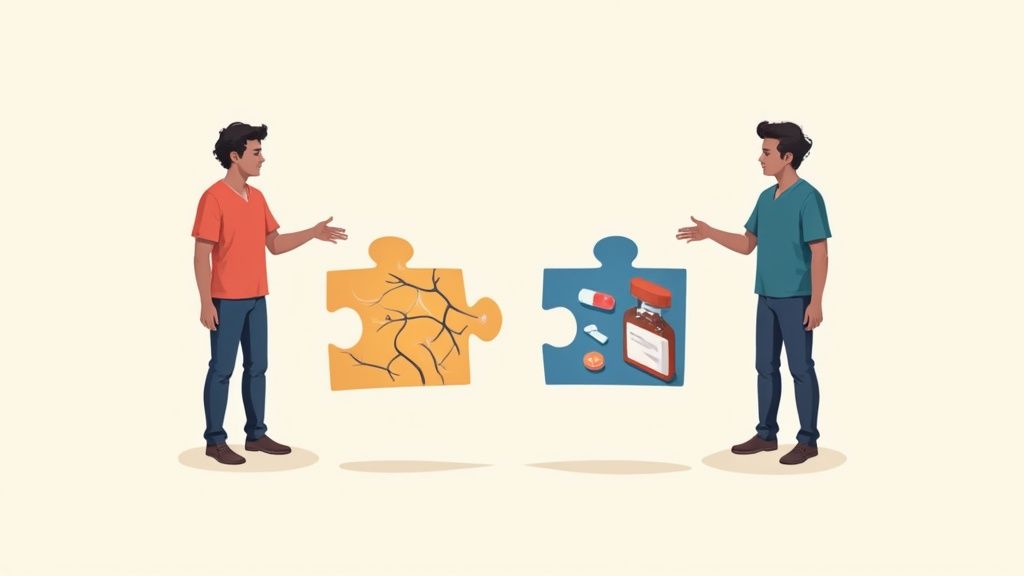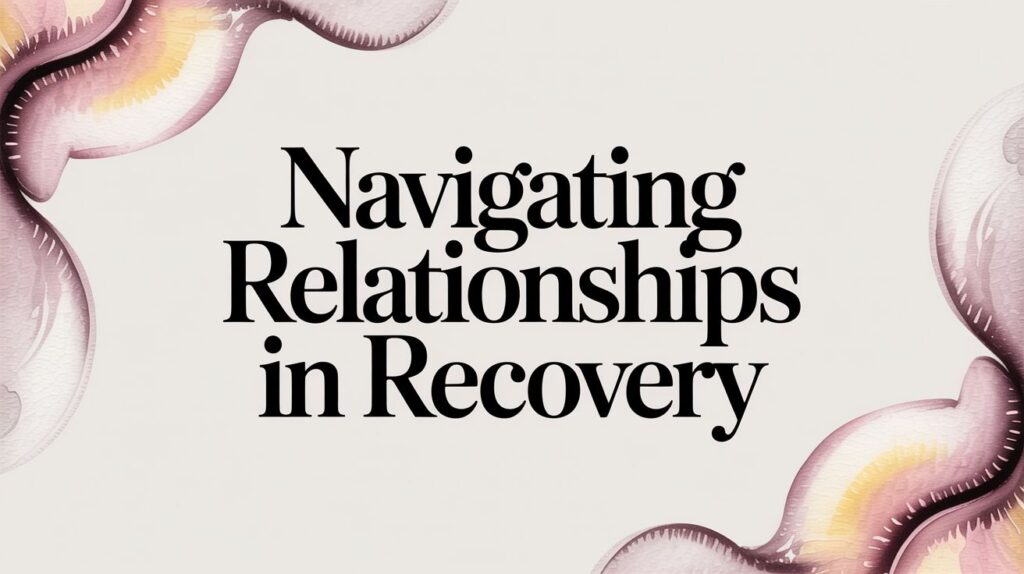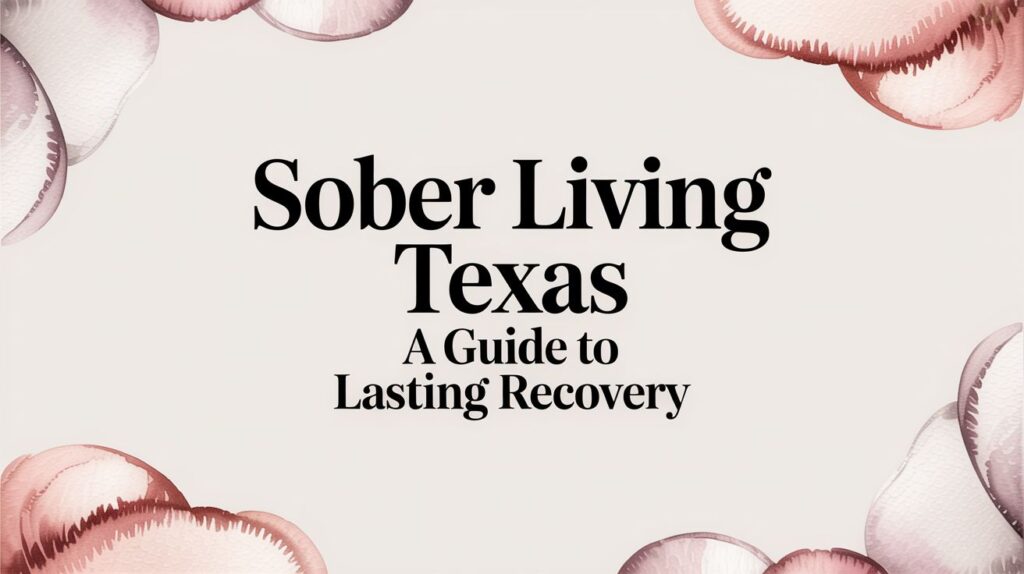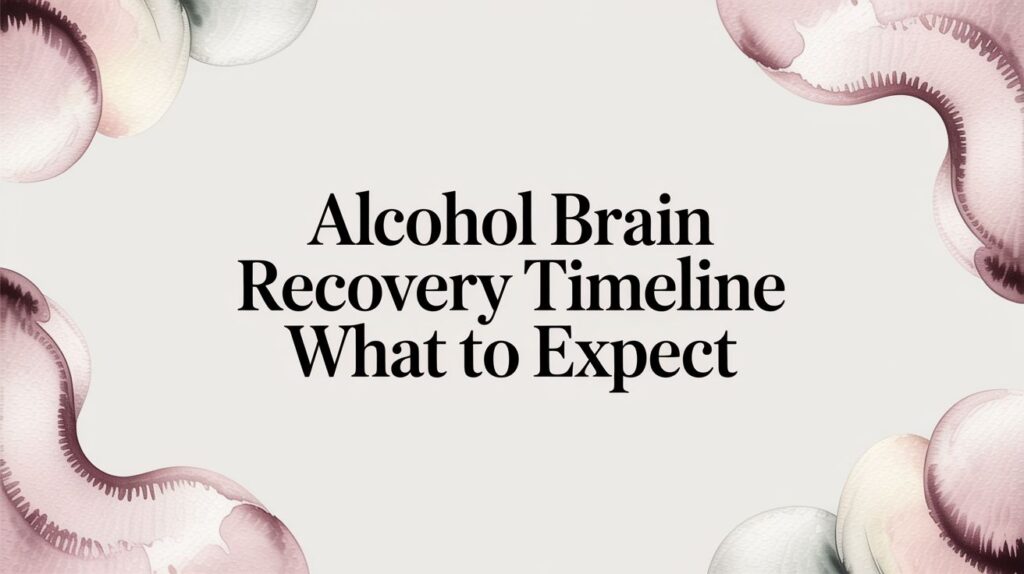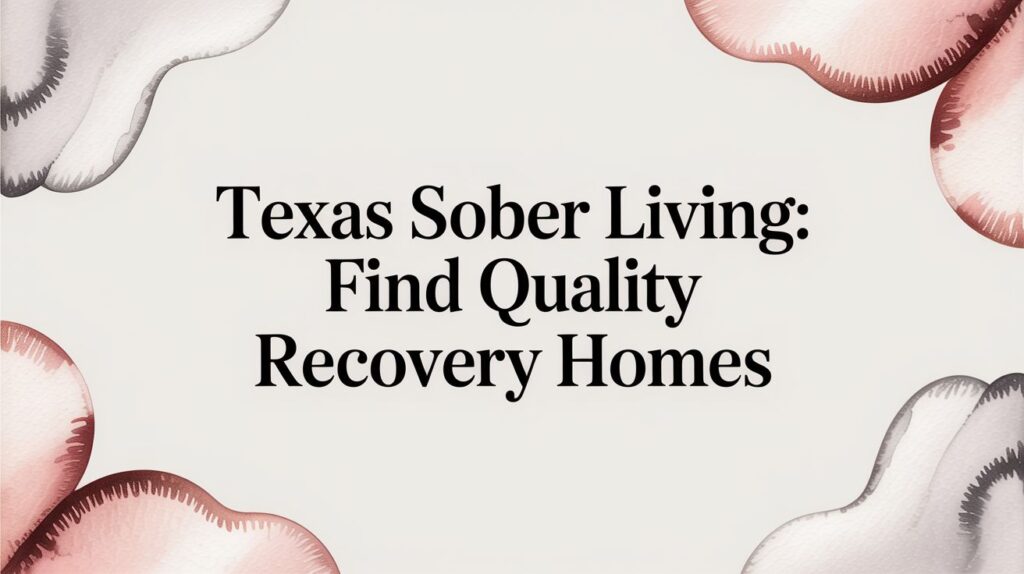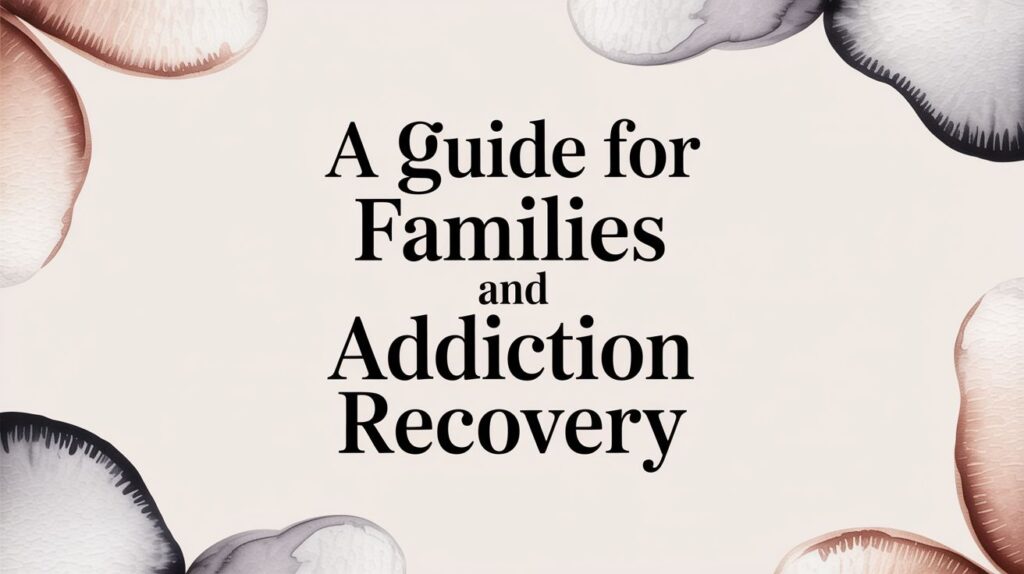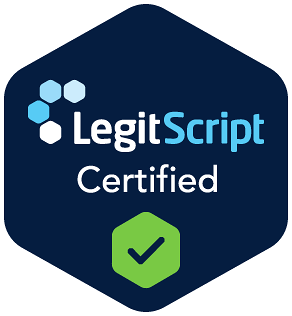When you’re struggling with both a substance use disorder and a mental health condition, it can feel like you’re fighting a war on two fronts. This is what we call a dual diagnosis, and specialized treatment programs are designed to tackle both challenges at the same time. Think of it as an integrated approach—because lasting recovery isn’t about fixing one problem, but healing the whole person.
Understanding the Dual Diagnosis Challenge
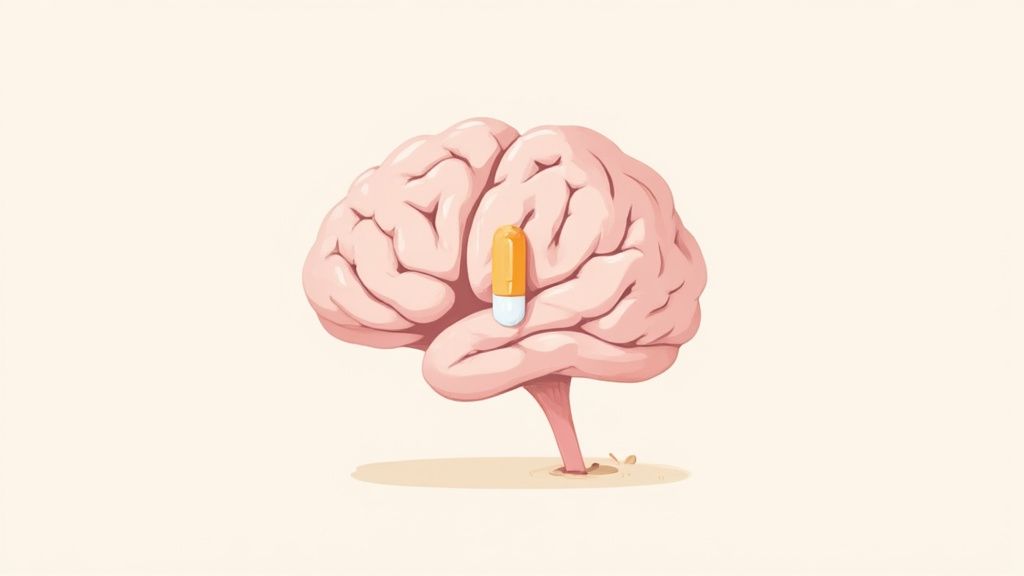
Imagine trying to fix a leaky pipe by only mopping up the water on the floor. You can clean up the mess all day, but until you stop the leak at its source, the problem will just keep coming back. This is exactly what it’s like to treat addiction without addressing an underlying mental health issue. The two are often deeply tangled, each one making the other worse.
Here’s a common scenario: someone battling social anxiety might start drinking to feel more at ease in social situations. At first, it seems to work. But over time, that self-medication can spiral into an alcohol use disorder. The alcohol then fuels more anxiety, creating a vicious cycle where the substance becomes the only perceived solution to a problem it’s actually worsening.
The Interconnected Nature of Mental Health and Addiction
This is why treating just the addiction is a losing battle. The underlying anxiety—the leaky pipe—will eventually cause another flood. This is where specialized dual diagnosis treatment programs become absolutely essential. They’re not just a "nice to have"; they are the gold standard for anyone caught in this cycle.
And this situation is far more common than most people think. Clinical data shows that nearly 50% of individuals with a severe mental health disorder also have a substance use disorder. This isn't a rare exception; it's a widespread reality, which is why integrated care is so critical for a recovery that actually lasts.
An integrated approach treats the whole person, not just isolated symptoms. It recognizes that mental wellness and sobriety are two sides of the same coin, and one cannot be fully achieved without the other.
What Integrated Care Looks Like
So, what does "integrated care" actually mean in practice? It means you have a single, unified team of specialists who address both conditions as part of one cohesive treatment plan. Instead of juggling appointments with a psychiatrist for your depression and a separate counselor for your addiction, you get care where every decision considers both issues.
A closer look at what goes into a truly integrated program can help you know what to look for when evaluating options for yourself or a loved one.
Core Components of Integrated Dual Diagnosis Treatment
| Component | Description | Why It Matters |
|---|---|---|
| Comprehensive Assessment | An in-depth evaluation to map out how the mental health condition and substance use disorder interact and fuel each other. | This initial step ensures the treatment plan is built on a correct and complete understanding of the individual's unique challenges. |
| Unified Treatment Strategy | A single, coordinated plan where therapies (like CBT or DBT), medications, and support services are chosen to benefit both conditions simultaneously. | This avoids conflicting treatments and ensures that progress in one area supports progress in the other, rather than undermining it. |
| Consistent Team Communication | The clinical team—therapists, psychiatrists, case managers—communicates constantly about the client's progress and adjusts the plan in real-time. | This creates a seamless and responsive care experience, preventing the client from falling through the cracks between different providers. |
| Simultaneous Treatment | Both the mental health disorder and the substance use disorder are treated at the same time, in the same setting, by the same team. | Treating issues sequentially (e.g., "get sober first, then we'll work on your trauma") often fails because the untreated issue triggers a relapse. |
This model ensures nothing gets missed. It lays the groundwork for a more complete and resilient recovery by getting to the root of the problem. For a broader overview of how recovery programs are structured, our guide on what rehab is can provide more context.
Why Integrated Care Is Essential for Recovery
Imagine trying to fix a car’s engine while completely ignoring a busted transmission. You might get the engine purring again, but the car still won’t drive right. For decades, this was pretty much the standard approach to treating co-occurring substance use and mental health disorders—handling them separately, as if they existed in different universes. This siloed model just led to a frustrating cycle of relapse and unresolved pain.
The reality is that mental health and addiction aren't two separate problems; they're deeply intertwined. One condition almost always fuels the other. For instance, someone with untreated PTSD might use alcohol to numb their anxiety and quiet intrusive thoughts. Over time, that self-medication can easily spiral into a severe alcohol use disorder, which then makes the PTSD symptoms even worse.
Treating only the drinking in this scenario is like mopping up a flooded floor without ever fixing the leaky pipe. The underlying trauma is still there, creating an immense internal pressure that makes a return to substance use feel almost inevitable. This is exactly why a fragmented approach to care is so ineffective.
The Problem with Disconnected Treatment
When addiction and mental health services operate in their own little bubbles, clients get caught in a confusing and counterproductive loop. The addiction center might say, "We can't treat your substance use until your depression is stable," while the mental health clinic insists, "We can't work on your depression until you're sober." This leaves people falling through the cracks of the healthcare system, without the comprehensive support they desperately need.
This broken system forces the individual to try and coordinate their own care—a nearly impossible task for someone already struggling. The result? Poor treatment engagement, conflicting medical advice, and a significantly higher risk of relapse. It’s an outdated model that completely fails to grasp the complex, tangled nature of dual diagnosis.
Fortunately, the standard of care has evolved. Today, integrated treatment—where one clinical team collaboratively addresses both conditions at the same time—is recognized as the most effective path to lasting recovery.
The Power of a Unified Approach
In dual diagnosis treatment programs, integrated care means that mental health and substance use are treated simultaneously, by one cohesive team, under one unified treatment plan. This approach sees the individual as a whole person, not just a collection of separate diagnoses.
An integrated model ensures that progress in one area supports and reinforces progress in the other. It stops the cycle of one untreated condition undermining the recovery from the second, creating a strong foundation for genuine, sustainable healing.
Instead of competing priorities, therapists, psychiatrists, and case managers all work together. They're constantly communicating to ensure that therapies for anxiety, for example, are perfectly aligned with relapse prevention strategies. This unified strategy is more than just convenient; it is clinically superior and leads to far better long-term outcomes. For a deeper dive into this model, you can explore our overview of dual diagnosis outpatient treatment options.
Despite its proven effectiveness, finding truly integrated care can be a challenge. A comprehensive study revealed that only about 18% of addiction treatment programs and 9% of mental health programs in the U.S. were fully equipped to provide dual diagnosis services. This significant gap highlights just how important it is to carefully vet programs to ensure they offer a truly integrated model. You can read the full research about these dual diagnosis service gaps to understand the landscape better.
Benefits of Integrated Dual Diagnosis Care
Choosing a program built on an integrated model provides clear, tangible advantages for long-term recovery. It's not just another option—it’s a critical factor for success.
Here are some of the key benefits:
- Improved Treatment Outcomes: By addressing root causes and interconnected symptoms together, clients are far more likely to achieve and maintain sobriety.
- Enhanced Skill Development: Individuals learn coping mechanisms that work for both their mental health and their addiction triggers, building a more resilient toolkit for life's challenges.
- Reduced Risk of Relapse: Treating the underlying mental health condition removes a primary driver of substance use, which significantly lowers the chance of relapse.
- Streamlined and Coordinated Care: A single team manages the entire recovery process, eliminating confusion and ensuring all aspects of a person’s health are considered.
Ultimately, integrated care provides a clear, logical, and compassionate path forward. It acknowledges the complexity of a dual diagnosis and provides a robust framework to heal the whole person, paving the way for a more stable and fulfilling future.
Navigating the Different Levels of Treatment Care
The path to recovery from a dual diagnosis isn’t a single leap; it's a series of deliberate steps. Think of it like a staircase. When you're at the bottom, you need the most support just to get started. As you climb, you build strength and confidence, needing less hands-on help until you can stand securely on your own. Dual diagnosis treatment programs are built just like this, offering different levels of care that adapt to your needs as you heal.
This "step-down" model ensures you always have the right amount of support. You're never left feeling overwhelmed, but you're also not held back from building real-world independence. Each level has its own structure, time commitment, and focus, designed to meet you exactly where you are in your recovery.
Inpatient and Residential Treatment: The Foundation of Care
The most intensive level of support you can get is inpatient or residential treatment. This is the ground floor of that recovery staircase, offering a highly structured, 24/7 environment where you can fully focus on getting well. You live at the facility, completely removed from the triggers and daily stressors that might have been fueling the cycle.
This immersive setting is perfect for anyone who is medically or psychologically unstable and needs a safe, dedicated space to heal. The daily schedule is full and purposeful, packed with a range of therapeutic activities.
- Individual Therapy: One-on-one sessions to get to the personal roots of your addiction and mental health struggles.
- Group Counseling: A chance to connect with peers, share what you're going through, and learn from others who truly get it.
- Medication Management: Regular appointments with a psychiatrist to stabilize mental health symptoms and manage any withdrawal.
- Holistic Activities: Practices like yoga, mindfulness, or art therapy that support your overall well-being.
This is where you get the constant supervision and immediate support needed to build a rock-solid foundation for the rest of your journey.
Partial Hospitalization Programs: A Bridge to Independence
Once you’ve built that stable foundation, the next step up is often a Partial Hospitalization Program (PHP). A PHP is like moving from living at the training facility to commuting for intensive, full-time practice. You attend treatment for several hours a day, usually five to seven days a week, but you return home or to a sober living environment in the evenings.
This structure is a game-changer. It allows you to start practicing your new coping skills in the real world while still having the safety net of daily, structured therapy. It’s a critical bridge between the total immersion of residential care and the greater freedom of outpatient services.
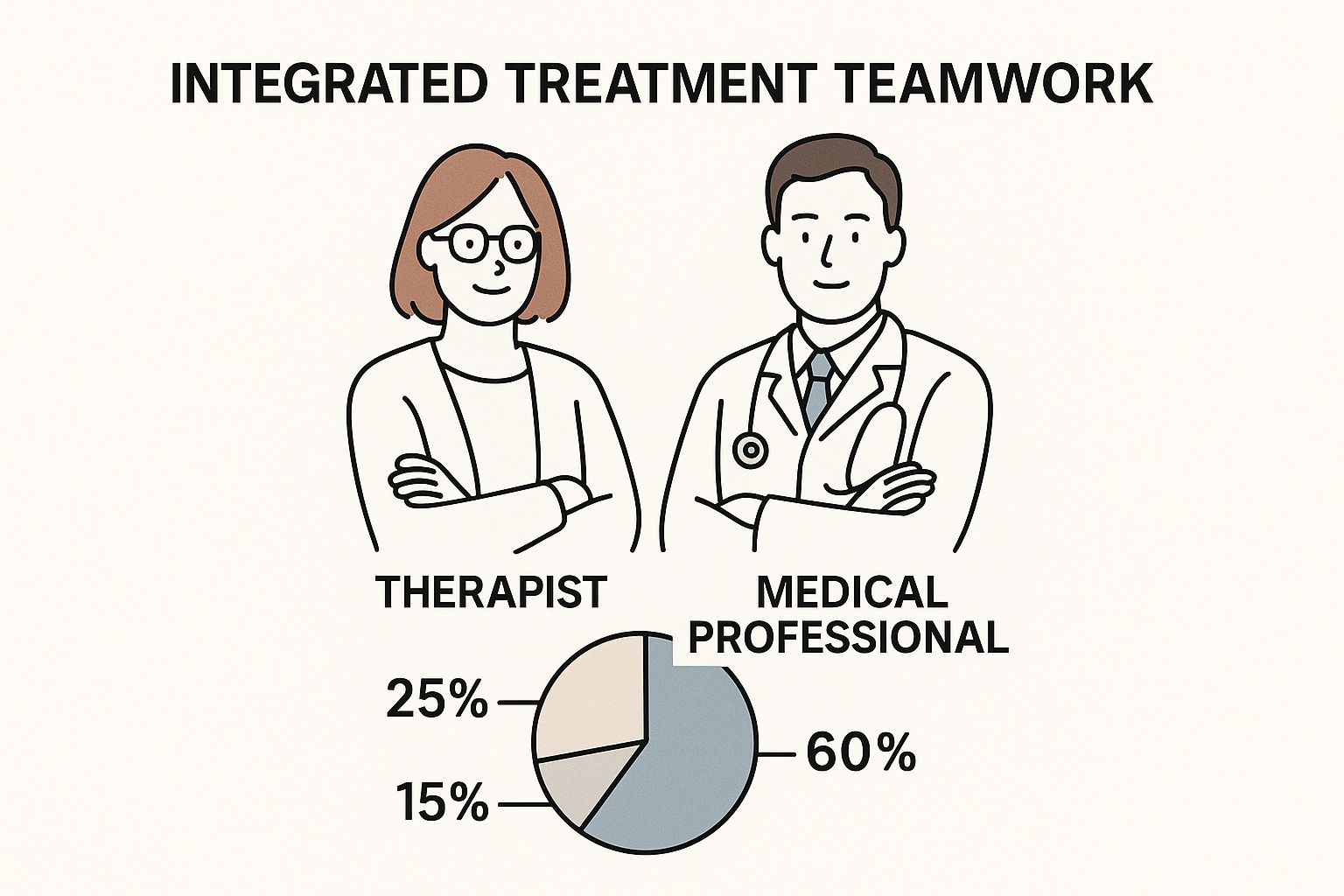
This image captures the collaborative spirit of dual diagnosis care, where medical and therapeutic experts come together to support your journey, no matter which level you're at.
Intensive Outpatient Programs: Integrating Recovery and Life
An Intensive Outpatient Program (IOP) is the next step on the staircase. It's designed for people who have achieved stability and are ready to weave recovery more fully into their daily lives. An IOP offers a serious level of support—typically 9 to 15 hours of therapy per week—but with much more flexibility than a PHP.
This model allows you to get back to work, school, or family responsibilities while still receiving robust clinical care. Sessions are often scheduled in the mornings or evenings to fit around your life. You can get a deeper look into this level of care by exploring our guide on what an intensive outpatient program is.
An IOP empowers you to apply recovery skills in real time. It’s where you learn to handle life's curveballs—a stressful day at the office, a family conflict—with the immediate backup of your therapy group and counselors.
Standard Outpatient and Aftercare: Maintaining Long-Term Wellness
Finally, you reach the top of the staircase: standard outpatient care and aftercare. This is the least intensive level, focused entirely on maintaining the incredible progress you've made. It might involve weekly or bi-weekly therapy sessions, ongoing medication check-ins, and staying active in support groups.
This continuing support is absolutely crucial for long-term success. Recovery is a lifelong journey, not a destination, and aftercare provides the tools and community you need to navigate the future with confidence. Each step down in intensity is a step up in personal freedom, guiding you toward a life of sustainable wellness.
To make these options clearer, here’s a simple breakdown of how the different levels of outpatient care compare.
Comparing Levels of Dual Diagnosis Care
| Level of Care | Time Commitment (per week) | Best Suited For | Key Focus |
|---|---|---|---|
| Partial Hospitalization (PHP) | 25-30+ hours | Individuals stepping down from residential care or those needing intensive daily support without 24/7 supervision. | Stabilization, intensive skill-building, and creating a structured daily routine for recovery. |
| Intensive Outpatient (IOP) | 9-15 hours | People who are stable enough to return to work or school but still require significant therapeutic support. | Integrating recovery skills into real-life situations, managing triggers, and building a sober social network. |
| Standard Outpatient (SOP) | 1-3 hours | Individuals who have completed a higher level of care and are focused on long-term maintenance. | Relapse prevention, ongoing support for mental health, and maintaining a healthy, balanced lifestyle. |
Choosing the right starting point or the next step depends entirely on your unique situation, clinical needs, and life circumstances. A thorough assessment with a treatment professional is the best way to determine which level of care will give you the strongest foundation for success.
Evidence-Based Therapies Used in Treatment
Effective dual diagnosis treatment programs aren’t built on guesswork. They run on a specific set of science-backed therapeutic tools, each designed to untangle the complicated relationship between mental health and substance use. These therapies are the engine of recovery, giving you the practical skills and insights needed to build a new life from the ground up.
Think of it like building a house. You wouldn't use just a hammer for every single task. You need a full toolkit—saws for cutting, wrenches for plumbing, and sanders for finishing. In the same way, an integrated treatment plan uses a variety of proven therapies, each with a distinct purpose, to construct a strong foundation for lasting wellness.
These methods are chosen because they’ve been rigorously studied and shown to work for both substance use and mental health conditions at the same time. They go far beyond just "talk therapy" to provide real, actionable strategies you can use every single day.
Cognitive Behavioral Therapy Rewiring Thought Patterns
One of the most powerful and widely used tools in the box is Cognitive Behavioral Therapy (CBT). At its core, CBT works on a simple but profound principle: our thoughts, feelings, and behaviors are all linked. Harmful behaviors, like turning to a substance, are often driven by negative or distorted thought patterns that have become automatic.
Imagine your brain has well-worn pathways, like deep grooves in a dirt road, that lead directly from a trigger (like a wave of anxiety) to a response (like reaching for a drink). CBT acts like a construction crew, helping you spot those old, destructive pathways and build new, healthier ones. A therapist helps you recognize these automatic negative thoughts, challenge their validity, and effectively “rewire” your brain’s response to stress.
CBT empowers you to become the architect of your own mind. It’s not about ignoring negative thoughts, but about learning to question them, reframe them, and choose a different, healthier behavior in response.
This practical, skills-based approach is incredibly effective for conditions like anxiety and depression, which are common co-occurring disorders. By changing the thought patterns that fuel both the mental health symptoms and the urge to use, CBT gets right to the root of the problem.
Dialectical Behavior Therapy Building Emotional Resilience
While CBT focuses on thoughts, Dialectical Behavior Therapy (DBT) provides a toolkit for managing intense emotions. DBT was originally developed to treat borderline personality disorder, but it has proven to be a game-changer in dual diagnosis care because it teaches skills to handle emotional dysregulation—a key driver of substance use.
DBT is built on four core skill modules:
- Mindfulness: Learning to stay present and aware without judgment, which helps you observe urges and emotions without immediately acting on them.
- Distress Tolerance: Developing strategies to survive crisis situations and accept reality without making things worse, such as by using substances.
- Emotion Regulation: Gaining the ability to understand and manage your emotions, making you less vulnerable to emotional extremes.
- Interpersonal Effectiveness: Learning how to communicate your needs, set boundaries, and build healthier relationships.
Think of DBT as an emotional first-aid kit. It gives you the exact tools you need to handle the pain, stress, and turmoil that once led you to self-medicate.
Other Foundational Treatment Modalities
Beyond CBT and DBT, a truly comprehensive program integrates other crucial therapies to create a well-rounded plan. Motivational Interviewing (MI) is often used early on to help people work through their mixed feelings about change and find their own internal motivation to get well. It’s a collaborative, non-confrontational approach that helps build a genuine desire for recovery.
For those with a history of trauma—which is incredibly common among individuals with a dual diagnosis—trauma-informed care is non-negotiable. Therapies like Eye Movement Desensitization and Reprocessing (EMDR) help the brain process and heal from traumatic memories that often fuel addiction. By addressing the underlying trauma, these methods remove a massive trigger for substance use, paving the way for a more complete and resilient recovery.
How to Choose the Right Treatment Program

Trying to choose the right dual diagnosis treatment program can feel like navigating a maze without a map. With so many options out there, how do you find the one that actually fits your unique situation? The secret is to become an informed consumer, armed with the right questions and a clear sense of what an effective program looks like on the inside.
Making the right choice goes way beyond finding a convenient location. It’s about making sure the clinical team, the therapeutic methods, and the whole philosophy of the center align with your personal path to recovery. When you do this homework, you empower yourself to pick a program that not only feels right but is clinically equipped to help you build a foundation for lasting wellness.
Your Essential Checklist for Evaluating Programs
Think of this as your pre-flight checklist before taking off on your recovery journey. Asking direct, specific questions helps you see past the glossy brochures and get to the heart of how a program really operates. Don't be shy about being thorough; a high-quality provider will welcome your diligence.
Here are the critical areas to dig into when you talk with an admissions coordinator:
- Staff Credentials and Specializations: Ask about the qualifications of the clinical team. Are the therapists licensed? Do they have specific certifications in treating co-occurring disorders or trauma? For dual diagnosis care, a team with specialized expertise is non-negotiable.
- Treatment Philosophy and Methods: Get clarity on their core approach. Do they use evidence-based therapies like CBT, DBT, and EMDR? A program should be able to clearly explain how their methods work to treat both addiction and mental health at the same time.
- Family Involvement and Support: A strong support system is vital. Ask what resources they offer families, like educational workshops, family therapy sessions, or support groups.
- Aftercare and Relapse Prevention Planning: What’s the game plan for when you complete the program? A great program starts planning your discharge from day one, creating a detailed aftercare plan that includes ongoing therapy, support groups, and alumni services.
A truly integrated program won't have separate tracks for mental health and substance use. The treatment for both should be woven together seamlessly, with every therapy and activity designed to address the whole person.
Spotting Potential Red Flags
Just as important as knowing what to look for is knowing what to run from. Certain claims or characteristics can be huge red flags, signaling that a program might not have your best interests at heart.
Be wary of any center that:
- Guarantees a "Cure": There is no magic cure for addiction or chronic mental health conditions. Recovery is a lifelong journey of management and growth. Any promise of a quick fix is not only unrealistic but also unethical.
- Offers a One-Size-Fits-All Approach: Every person's experience with a dual diagnosis is different. A rigid, inflexible program that doesn’t offer personalized care plans is unlikely to meet your specific needs.
- Lacks Transparency About Costs: A reputable provider will be upfront about the full cost of treatment and help you verify your insurance benefits. Hidden fees or vague answers about money are a major warning sign.
Understanding the Financial and Practical Details
Sorting out the logistics of treatment is a crucial step. Before you commit, take the time to get the financial picture straight. Have the admissions team run a verification of benefits with your insurance provider to get a clear idea of what’s covered and what your out-of-pocket expenses will be.
You should also consider practical things like medication management. If you need psychiatric medications, it's essential to know how the program handles this. You can learn more by reading our guide on what medication-assisted treatment involves.
Finding the right program takes work, but it’s one of the most important investments you can make in your future. Globally, there are over 15,600 dual diagnosis treatment centers, which shows how much the understanding of co-occurring disorders has grown. This huge network means you have options, so take the time to find the one that will truly support your journey back to health. You can discover more insights about the availability of co-occurring disorder care and what it means for patients.
Your Questions About Dual Diagnosis Treatment, Answered
Deciding to seek help for a dual diagnosis is a huge step, but it naturally comes with a lot of questions. When you're trying to find the right dual diagnosis treatment program, you deserve clear, direct answers, not confusing clinical speak. This section is designed to tackle the most common questions we hear, so you can move forward with confidence.
Getting clarity on these points helps take the mystery out of the recovery process. It gives you a practical roadmap, letting you focus on what really matters: healing.
How Long Does a Typical Dual Diagnosis Program Last?
There’s no one-size-fits-all answer here, because the length of treatment should always be built around your specific needs. It's less like a fixed sentence and more like a continuum of care that adapts as you get stronger. A common starting point is 30 to 90 days in a residential program, which is great for building a solid foundation away from daily triggers.
After that, you'll likely begin a "step-down" process. This could mean moving to a Partial Hospitalization Program (PHP) for several weeks of intensive daily therapy, followed by a few months in an Intensive Outpatient Program (IOP) that fits around work or school.
The whole point is to create a gradual, supported transition back into your life. Real, lasting success is almost always linked to staying engaged with aftercare, like weekly therapy or support groups, which can remain part of a healthy recovery plan for a year or even longer.
Will My Insurance Cover Dual Diagnosis Treatment?
The cost of treatment is a major—and completely valid—concern for most people. The good news is that the vast majority of major insurance plans do cover dual diagnosis treatment. Thanks to the Affordable Care Act (ACA), mental health and substance use services are considered essential health benefits, which means insurers are required to provide coverage.
That said, the amount of coverage can vary a lot from one plan to another. The absolute best first step is to call the treatment center’s admissions team directly. They are experts at verifying benefits and can sort through the details for you.
This quick process will clarify exactly what your specific plan covers—including different levels of care like PHP or IOP—and spell out any out-of-pocket costs you might have, such as deductibles or copays. Getting this sorted out upfront is a critical move that prevents any financial surprises down the road.
Understanding your insurance benefits is empowering. It allows you to choose the best possible care for your needs without the added stress of financial uncertainty, ensuring your focus remains on recovery.
What Happens After I Complete a Treatment Program?
Finishing a structured program is a massive achievement, but it’s really the beginning of your recovery journey, not the end of it. Any quality program will work with you to build a detailed aftercare planbefore you even walk out the door.
Think of it as your personal roadmap for staying well. It’s custom-built to provide ongoing structure and support as you get back to navigating life's everyday challenges.
A solid aftercare plan almost always includes:
- Scheduled Therapy: Keeping regular appointments for individual counseling and medication management is key to maintaining mental and emotional stability.
- Support Groups: Getting connected to peer support networks like Alcoholics Anonymous (AA), Narcotics Anonymous (NA), or SMART Recovery provides a vital sense of community.
- Sober Living Recommendations: For anyone needing extra structure, a referral to a sober living home can provide a safe, trigger-free environment to practice new skills.
This continuing care structure is all about helping you confidently use the tools you’ve learned. It makes sure you have a safety net in place to protect the progress you've worked so hard to achieve.
Can I Be Forced Into a Dual Diagnosis Program?
This is a sensitive topic, but an important one. For an adult, treatment works best when it's voluntary. That personal commitment to getting better is the single most powerful engine for lasting change.
However, there are a few specific legal situations where treatment can be required. If an individual is professionally determined to be a clear and present danger to themselves or others because of their condition, a legal process for involuntary commitment does exist. These laws differ from state to state and always require a formal court hearing to protect the person's rights.
Treatment can also be mandated by the courts, for example, as a condition of probation or as part of a drug court program. While these scenarios involve outside pressure, the best and most sustainable recovery almost always comes from a person's own decision to heal and actively engage in the process.
At Altura Recovery, we know that starting this journey can feel like a lot to handle. Our compassionate team is here to answer every single question and walk you through each step, from checking your insurance to building a personalized aftercare plan. If you or someone you care about is struggling with co-occurring disorders, we provide the integrated, evidence-based care needed for real healing and lasting freedom. Reach out today to learn more about our flexible outpatient programs at https://www.alturarecovery.com.

